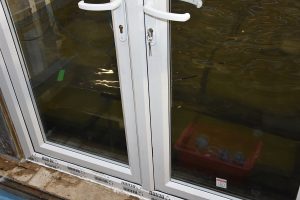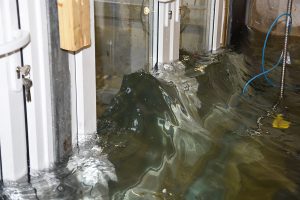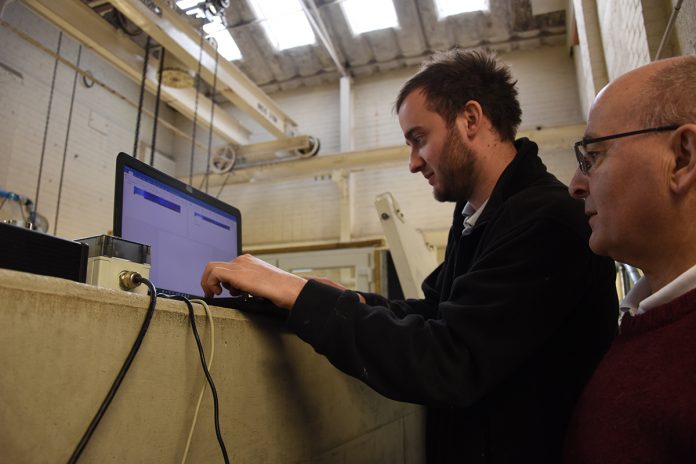When it is ajar or, more relevantly, when it has usurped or bypassed the BSI Kitemark certification
The above is true of all property-level flood resilience measures – flood barriers, airbricks covers etc – but it becomes more of an issue when we consider flood doors.
- Flood doors are much more expensive than flood barriers
- Flood doors are an integral part of the property fabric because they are used every day to gain access to a property
- 99.9% of the time they are simply a door and need to function as such
- They will need to last for many years as a standard door but in the 0.1% of time when they are needed as a flood door they must function as intended.
The issues that can arise with flood doors relate to more than just their functionality in flood protection, however as a normal door, residential flood doors need to be easy to operate with standard handle forces and an easy to lock operation.
Getting this right is a matter of good design and a keen understanding of how doors work.
Let’s face it: if we had a clean sheet of paper from which to design a flood door, we would not start by using a standard door uPVC profile and off-the-shelf locking gear, as all do at present.
Other standard door features have to be overcome:
- Standard doors are designed to keep out harsh weather-driven rain and wind but not floodwaters
- They have vent holes to ventilate the building
- They have drainage holes that channel water away from the inside of the door frame and out through external holes
- The sash frame is not fully rigid and will deflect under load
- The frames have right angled corners with simple gaskets that are mitred and welded together in these corners
- They may use simple hinges that offer little or no adjustment of compression
All of these deficiencies can be addressed with careful design and the use of top-grade components and fabrication techniques.
However, in addressing these issues, most flood doors fall down as they compromise the main functionality of the door. The increased compression from extra locking points and thicker gasket results in increased handle forces and undue stress in the locks and gasket. It can often make the door impossible to use because it is simply too hard to operate as a door.
The margin between sufficient compression and usability is fine and a designed trade-off between the two. In Aquobex’s case, this is an area of continual development and one that we have perfected over many years, to the point that we now offer the easiest to operate flood door in the market.
This means that without the increased stresses on locks, hinges and gaskets, we are also able to offer the most durable uPVC flood door, which with due care and maintenance, will last as long as any standard door with a design life in excess of 20 years. In contrast, a large proportion of flood doors supplied under government grants and contracts are not fit for purpose even within a year of installation.
Due care and maintenance are important because none of us treat our doors well. Little children love swinging on the door hands of an open door to take a ride as it opens (I know I did) and we trail bikes, pushchairs and trolleys across the bottom seal. We also scuff our feet over this seal and don’t care to step over the threshold, so the seal gets displaced and becomes ineffective even against rain and wind.
So we need to care for this finely crafted flood door that will save our precious home from inundation but we also need to be assured that this good design is also fit for purpose and that is the point of accreditation.
Certification
Certification gives credibility and confidence to customers and drives manufacturers to higher standards of manufacturing and quality. They may also encourage an insurer to recognise the effectiveness of a particular product.
The PAS1188 is the only relevant product standard and certification for this is provided under a BSi Kitemark scheme. It allows a leakage rate of no more than 0.5 litres per horizontal metre per hour and it also embraces parts of ISO9001 through adherence to documented manufacturing processes.
Some manufacturers use different terminology to imply that they meet this standard. Buyers may be confused by claims of ‘exceeding the Kitemark’, ‘designed to meet PAS1188-1:2014’ or ‘our product is 9001 certified’. Manufacturers may be making these claims despite never having subjected their products to static water, waves and currents in a series of tests and independent scrutiny.
Sadly, a Kitemark is not the end of the story.
Misuse of BSi Kitemark
BSi last year revealed that an investigation found that a number of Kitemarked flood doors had dispensed with the sash jammers that were used to help them pass the tests, a story akin to VW’s emission tests. These were devices deployed from the inside to squeeze the door into the frame compressing the gasket. They were also completely impractical in most instances as a user would have to exit their house via a window.
It has not been disclosed by the government bodies or main contractors involved how many doors are now without certification, but thousands of properties were supplied with such products after the flooding in 2015-16. The manufacturer concerned, Watergate Flood Solutions, has since gone into liquidation.
Water testing
On-site water testing has not been considered a necessary item due to the veracity of the Kitemark but confidence of some sophisticated buyers such as utility companies is now very low due to the experience above or failure of hundreds of previous door installations. Some of them routinely water-test flood doors and routinely find that they are nowhere near meeting the required standard.
In some cases, so-called flood doors turn out to be inferior to standard doors. In other cases, they are poorly installed and not adequately sealed in.


The way forward?
There is a very low threshold of entry to the flood protection industry and it is populated by industry players with a wide range of competency, certification and ethics. We at Aquobex (www.aquobex.com) take our role as industry leaders seriously and we seek to develop high quality products, reliable installers and leave our clients satisfied with a real prospect of obtaining flood insurance cover. We have helped to draft the forthcoming British Standard and have had input into the new industry code of practice. These two initiatives should help to drive up standards in the industry and in particular with flood doors.
It is easy to focus on the deficiencies of the flood protection industry, but it is a market totally dependent on government funding in its various forms. It is therefore incumbent on government agencies and local authorities to grasp the nettle. The focus on price allows low standards to permeate through poor products standards to people’s homes eroding confidence in property-level flood resilience by end users and insurers.
It follows on that this also represents poor value for taxpayers. Funding mechanisms are based on 20 years of protection but how many flood doors will offer protection in two years, let alone 20? Who will have the courage to water-test the Watergate doors and measure their performance against the standard? Government procurement needs a radical upheaval with a move to prioritise quality and whole-life costs and not just the upfront costs.
Like most things, we need to start the change process now. People who have purchased and installed poor quality flood products will suffer flooding again unless we address these issues right now.
John Alexander
Managing Director
Tel: 01923 518582
Twitter: Aquobex














